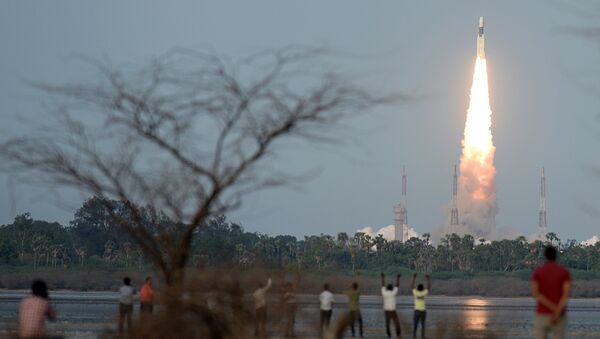Two European heavy-lift Ariane 5 launch vehicles would be used to launch India's GSAT-31 and GSAT-30 from the Guiana Space Center, Europe's Spaceport in Kourou, French Guiana, at the end of 2018, starting with GSAT-31, Arianespace announced on Wednesday.
READ MORE: India to Launch Manned Space Mission by 2022, PM Declares on Independence Day
"Arianespace is delighted that ISRO has entrusted Ariane 5 with two new GEO satellites to deliver: GSAT-31 and GSAT-30, to be the 23rd and 24th ISRO satellites launched by Arianespace since our first joint success with APPLE in 1981," said Stéphane Israël, CEO of Arianespace.
"Both satellites will be designed, assembled and integrated by ISRO. They are planned as replacement satellites for the currently operational satellites providing key national services in multiple frequency bands including C- and Ku Bands," a statement issued by Arianespace reads.
READ MORE: India Readies Baby Rockets to Tap Small Satellites’ Market
Originally, the ISRO had planned to use its GSLV Mark-3 rocket to launch the two satellites. However, with the ambitious second lunar mission Chandrayaan-2 lined up for early next year, ISRO was compelled to engage a foreign agency for the launch of the heavy communications satellites.
The ISRO has been keen on roping in the domestic private sector to finance the rocket manufacturing and satellite launch business so that it can itself focus on research. However,, there has been no significant progress on this front.



